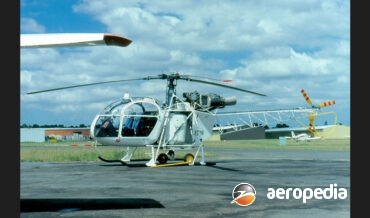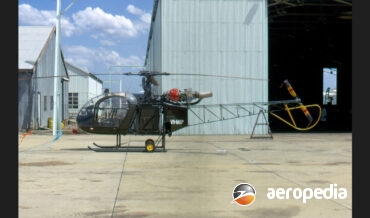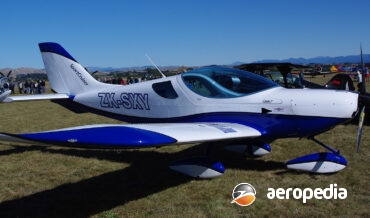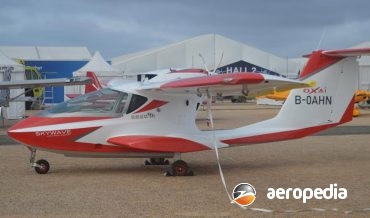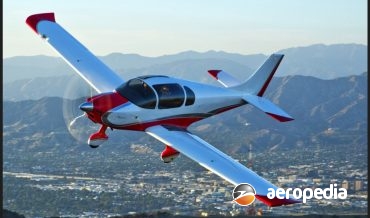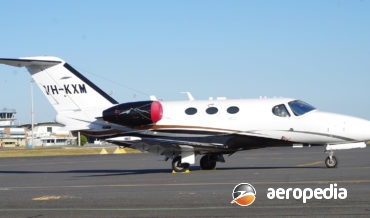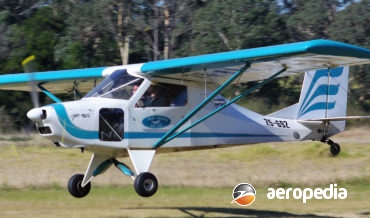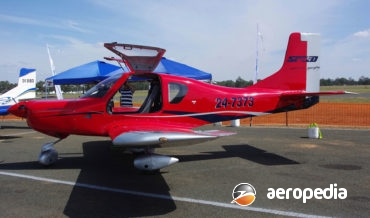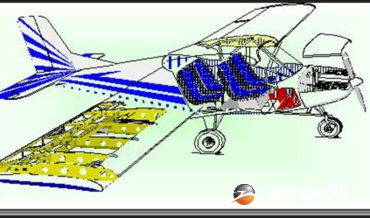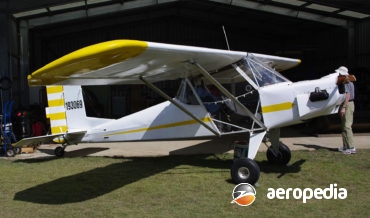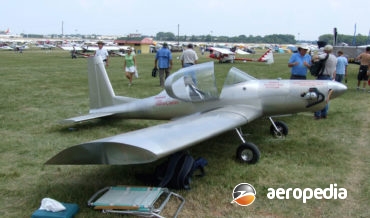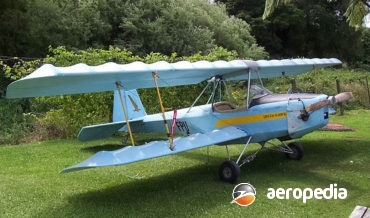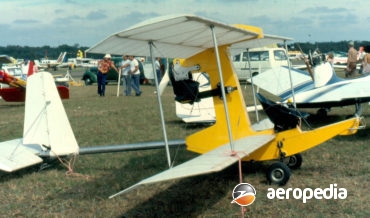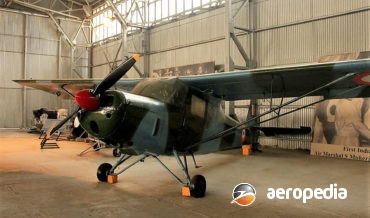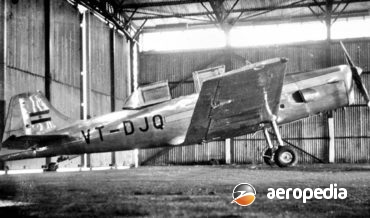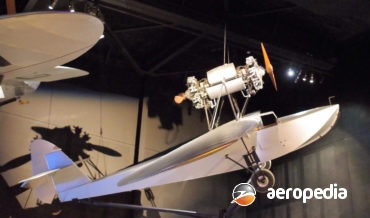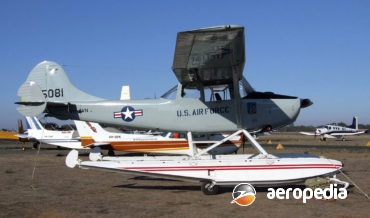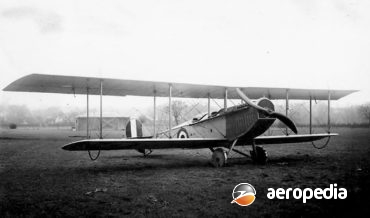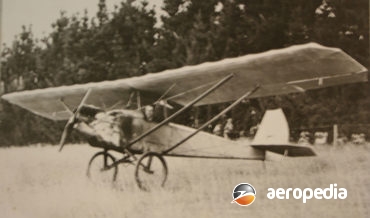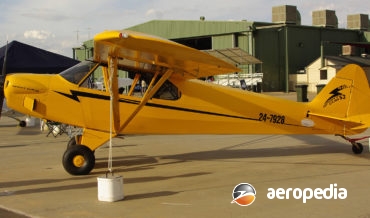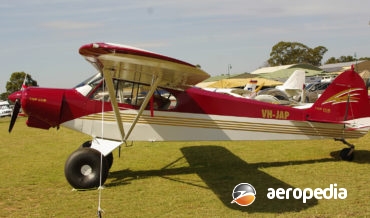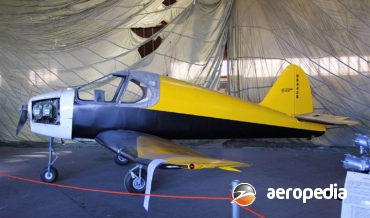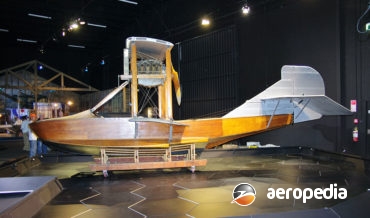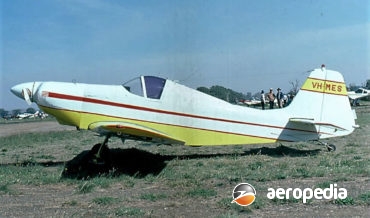All Contents
Contents
The Lama was developed by Aerospatiale in France mainly to meet the requirements of the Indian armed forces for a light utility helicopter.
David C. Eyre
- June 26, 2020
Designed by the French company, Sud Aviation, which later became part of Aerospatiale, the national aerospace company, the Alouette II was one of the early success stories in the development, production and marketing of helicopters in France.
David C. Eyre
- June 26, 2020
The SportsCruiser was designed in the Czech Republic as an all-metal low-wing, low maintenance aircraft and is built at the CZAW facility.
David C. Eyre
- June 26, 2020
The Startech ST-1 was one of a few designs by Anthony Shennan, an Australian, who designed the BeachBoy Staggerwing, Beach Boy ultralight, and light sport aircraft.
David C. Eyre
- June 26, 2020
The White Der Jager is a single-seat light amateur-built biplane designed and market by White Aircraft, being designed by Marshall White, and is a development of the Stolp SA-500 Starlet, the intention being to make the aircraft similar in appearance to a World War I biplane.
David C. Eyre
- March 23, 2020
The M-2 Skywave is one of a new series of carbon fibre two-seat light sport aircraft introduced to the market in the 21st Century and is similar in appearance to the Icon M-5 from the United States and the Vickers Wave produced at New Plymouth in New Zealand.
David C. Eyre
- March 23, 2020
In 1980 the Cessna 425 Corsair was introduced to the Cessna range. Based on the airframe of the Model 421 Golden Eagle, the Corsair was fitted with Pratt & Whitney PT6A turboprops.
David C. Eyre
- March 23, 2020
The Sling TSi first flew in 2018 and is produced by The Airplane Factory in South Africa and is a four-seat cabin monoplane fitted with a tricycle undercarriage developed from the company’s previous offering, the Sling 4.
David C. Eyre
- March 23, 2020
The Slepcev Me 109G-2 was a 75% per cent scale replica of the Luftwaffe Messerschmitt Bf 109G-2 fighter aircraft of World War II.
David C. Eyre
- March 23, 2020
On 8 September 2006 the Cessna Aircraft Company was granted a type certificate for the Citation Mustang, the Model 510, making it the world’s first fully-certified, new-generation entry level business jet.
David C. Eyre
- March 23, 2020
Construction of the prototype of the Lightwing series began in 1984 and, initially known as the GA-55, it flew for the first time in June 1986 and was built as a ‘micro-light’ to meet ANO 101-28.
David C. Eyre
- August 24, 2019
The Lightwing Speed was designed and built by the Hughes Lightwing Co at Ballina, NSW to be produced in kit form for the light aircraft market, being produced in four basic versions, the two-seater known as the SP2000-S which is a lightweight models for registration under Recreation Aircraft Australia Regulations
David C. Eyre
- August 24, 2019
In late 1999 Hughes Engineering of Ballina, NSW, announced it proposed to put into production a four-seat kit aircraft designed by students from the University of New South Wales Engineering School, the latter having been commissioned to design the aircraft earlier that year.
David C. Eyre
- August 24, 2019
The P R Breeze is a single-seat variant of the PR-582 Pocket Rocket using the basic Lightwing fuselage, but fitting it with a single parasol configuration wing and installing a range of Rotax engines, including the Models 582, 503 or 618 two strokes, or the Rotax 912 four-stroke.
David C. Eyre
- August 24, 2019
The Ultra Cruiser was designed by Maurice Hummel and is produced by Hummel Aviation for the ultralight and sporting aircraft market and is available in kit form or as plans only form but may also be obtained as a read-to-fly aircraft.
David C. Eyre
- August 24, 2019
The Typhoon was designed by the late William ‘Bill’ Andiel and marketed by Homebuilt Aviation in northern New South Wales.
David C. Eyre
- August 24, 2019
The Delta Hawk is a light single-seat sporting biplane which was available in the 1980’s in kit form in the United States, being designed by Mr R W Hovey of California.
David C. Eyre
- August 24, 2019
The Whing Ding was designed by Mr R W Hovey as an ultra-light aircraft which would require minimal construction time, would have STOL performance, and capable of easy dis-assembly for transportation and storage.
David C. Eyre
- August 24, 2019
The Heston Phoenix was built by the Heston Aircraft Co Ltd at Heston, the company rising out of the demise in 1934 of the Comper Aircraft Co Ltd.
David C. Eyre
- August 24, 2019
In 1955 the aircraft division of the Hughes Tool Co designed and developed a light helicopter known as the Model 269.
David C. Eyre
- August 24, 2019
The Hevle Classic is two-seat development of the Bowers or EAA Fly Baby which was designed as a simple, easy to fly, low-coast light aircraft for the amateur builder.
David C. Eyre
- August 24, 2019
During the 1930s Mr Percy Hick of Ballingal, near Griffith, NSW, with the assistance of his two brothers Stanley and Allan, built two aircraft.
David C. Eyre
- August 24, 2019
Stanley Hill Jr designed the Model 360 helicopter and offered it for commercial sale in 1948. Subsequently the designation Hiller 360 was dropped in favour of UH-12, and later models were known simply as the 12C, 12E, etc.
David C. Eyre
- August 24, 2019
The Praga E.114 was designed by Jaroslav Slechta in Czechoslovakia and initially built by CKD Praga, where it became known as the Air Baby.
David C. Eyre
- August 24, 2019
The Krishak was manufactured by Hindustan Aeronautics Ltd of Bangalore as the HAOP-27 air-observation post and liaison monoplane for the Indian Air Force to replace the Auster AOP-9.
David C. Eyre
- August 24, 2019
The HT-2 was designed by Dr V M Ghatge, Chief Designers of Hindustan Aircraft Ltd at Bangalore, India.
David C. Eyre
- August 24, 2019
The Ibis was a foray into the design and construction of a light aircraft by one of Australias most famous aviators, Herbert (Bert) John Louis Hinkler.
David C. Eyre
- August 24, 2019
Production of the Scout/Wasp series of light helicopters was commenced in 1957 as a private venture by the Saunders-Roe Company.
David C. Eyre
- May 19, 2019
In 1934 the British Air Ministry foresaw the problems that may later occur in Europe and decided upon a major expansion programme for its military services, one of the fruits of this plan being the Hawker Hind light bomber, designed as an interim replacement for the Hawker Hart, which had
David C. Eyre
- May 19, 2019
The Grumman G44 Widgeon fours eat light twin-engine, high-wing cabin monoplane amphibian was flown in prototype form for the first time in July 1940.
David C. Eyre
- May 19, 2019
In 1950 the Cessna Aircraft Company of Wichita, Kansas, won a competition for the design of a liaison and observation monoplane for the US military services with the Model 305A, a development of the commercial Model 170 with similar wings, tail unit, and landing gear.
David C. Eyre
- May 19, 2019
Designed for one of the founders of the American aviation industry, Glenn Hammond Curtiss, the Jenny was one of the great pilot training aircraft of the World War I period.
David C. Eyre
- May 19, 2019
David Cecil Cross of Chatton, NZ, 24 years of age, described as a “technological experimenter” in 1933 built a small monoplane of his own design on a farm at Chatton, north of Gore, NZ. He was one of seven children.
David C. Eyre
- May 17, 2019
As noted in the Top Cub article, CubCrafters was founded in 1980 by James Richmond in Wisconsin to re-build and modify Piper PA-18 Super Cubs and similar aircraft and eventually to redesign the aircraft and upgrade it to meet customer requirements.
David C. Eyre
- May 17, 2019
The CubCrafters CC11-100 was introduced to the Light Sport Aircraft market in the United States to meet a requirement for a lower-powered variants of its range and is an entirely new aeroplane designed from the ground up making extensive use of modern avionics, design techniques and composites including carbon fibre,
David C. Eyre
- May 17, 2019
CubCrafters was founded in 1980 by Mr James Richmond in Yakima, Wisconsin to re-build and modify PA-18 Super Cubs and similar aircraft, and by 2007 more than 120 aircraft had been through the company’s re-manufacturing facility.
David C. Eyre
- May 17, 2019
The Culver Cadet series of light aircraft was designed by Al Mooney and built by the Culver Aircraft Company of Wichita Kansas as a two-seat small side-by-side all-wood construction light aircraft fitted with a 60-kw (80-hp) Franklin 4AC-176-D engine.
David C. Eyre
- May 17, 2019
The Curtiss Seagull was a civil variant of the Curtiss MF flying boat trainer produced from 1918, the civil aircraft having a 119-kw (160-hp) Curtiss C.6 six-cylinder in-line engine in place of the V-8 unit in the military variants.
David C. Eyre
- May 17, 2019
The Full Metal Jacket is a newcomer to the light sports aircraft market and is of all-metal construction and built at Mildura, Vic, being a development of an aircraft known as The Bullet, which was a single-seat all-composite aircraft but about which little is known.
David C. Eyre
- May 17, 2019
Mr Anton Cvjetkovic, a Yugoslav emigrant to the United States, began work in May 1960 on the design of a series of light aircraft, the first of which became known as the CA61.
David C. Eyre
- May 17, 2019
Recent Comments
Archives
Categories
- No categories
Categories
- No categories
Latest Posts
Newsletter

